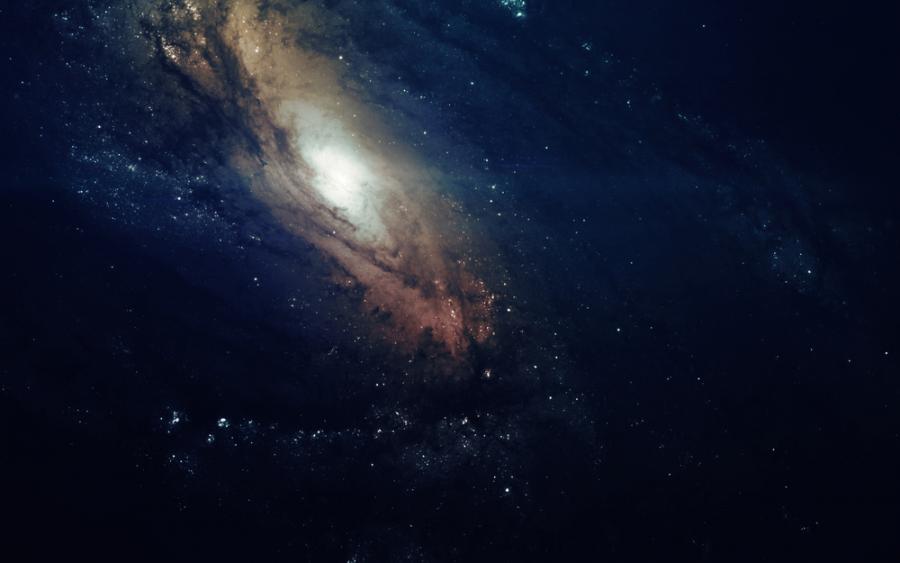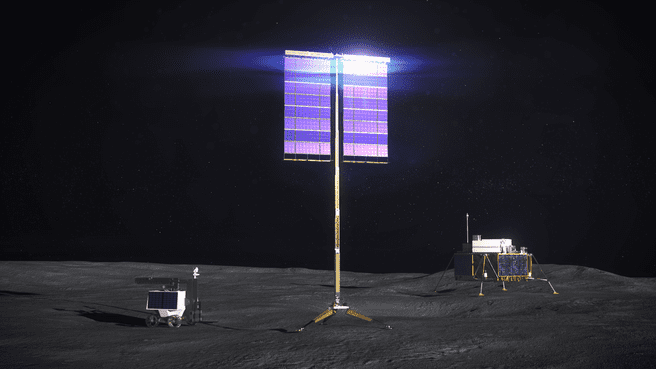Our universe is expanding. With acceleration. With each passing second, the space between galaxies in space is growing faster and faster.
What will be the ultimate destiny of the universe – eternal expansion or great collapse? The key to this question is the understanding of “dark energy” – the biggest mystery of modern astrophysics, which is the reason for the acceleration that began suddenly 4-5 billion years ago.
It was not until the late twentieth century that scientists discovered that the universe was expanding. It began only about 5 billion years ago, relatively recently compared to the age of the universe, which is almost 14 billion years old. This is a huge surprise for all scientists, because according to the theories of the time, the universe should slow down, not accelerate its expansion.
In fact, Einstein himself encountered problems with the idea of a universe that is changing, not static. Almost to the very end of his life, the great scientist believed that the universe must be static and unchanging – it should neither expand nor shrink. That is why he changes his equations, which speak to the opposite, and adds to them the so-called a cosmological constant that does not allow space to expand.
When in 1929 the American astronomer Edwin Hubble discovered the so-called redshift of galaxies, it becomes clear that
all the other galaxies in space seem to be “running away” from us.
Just as when a car moves toward us, its sound changes, so when a galaxy moves, its “color” changes, and we can determine whether it is approaching or moving away from Earth.
Hubble observes a shift in the visible light of galaxies to the red spectrum, which means that the object is moving away and we can measure its speed. This is the so-called Hubble’s law, and the rate of expansion is now known as the Hubble constant (about 72 km per second per megaparsec, as 1 parsec = 31 trillion kilometers or 206,265 times the distance between the Earth and the Sun, and 1 megaparsec = 1 million parsecs) .
In this situation, the only possible explanation is that the space of the universe is expanding and cannot be static. And although Hubble’s experiments are empirical proof, the mathematical derivation of this fact was made even earlier by the Belgian mathematician Georges Lemaître in 1927. In the face of this evidence, Einstein abandoned the cosmological constant and even called it “the greatest error in his career. ”
Today, however, it turns out quite unexpectedly that we again need a cosmological constant, albeit in a slightly different way.
The Big Bang Theory and the Evolution of the Universe
Once it becomes clear that the galaxies are scattering relative to each other, it is logical to assume that in the beginning they were all clustered in the same place. Moreover, we can assume that in the very beginning the universe was compressed into a single point that exploded. This is how the Big Bang theory was born.
Today it is one of the widely accepted and proven theories about the development of the universe. The reason is its enormous explanatory power. Indeed, if everything has ever been gathered in one point, then this condition must have a huge temperature and incredible density. Simulating such conditions is one of the tasks facing modern particle accelerators such as the Large Hadron Collider at CERN. Unraveling the appearance of chemical elements as a result of the Big Bang, the so-called primary nucleosynthesis is also one of the great successes of theoretical nuclear physics.
But one problem remains. If we assume that there was an initial Big Bang that “inflates the universe” and ensures the comparative uniformity (homogeneity) of space on a large scale, and in every direction that we do, then shouldn’t there be any an energy imprint from this primary colossal explosion that we can see? It turns out that there is.
The proof
This is the so-called cosmic microwave background radiation, also called residual or relic radiation. The idea is that when the universe is very young, it is in an extremely dense and hot state of plasma and is opaque. In the process of expansion, its temperature decreases and it begins to cool. At lower temperatures, stable atoms can already form, but they cannot absorb heat radiation, and therefore the universe becomes transparent (about 300-400 thousand years after the Explosion). This is the time when the first photons were emitted, which even today move through space and can be detected by us. Therefore, their radiation is called relic, ie. residual. This moment is also the most distant thing we can see with our telescopes. What has happened before – the universe is silent for now.
In 1964, two radio astronomers, Arnaud Penzias and Robert Wilson, experimentally discovered the effect of the relic background – a constant microwave “noise” with a temperature of about 2.7 kelvins, uniform and uniform at any point in the sky without being associated with a star or other object. This is the voice of the cosmos, the remnant of the explosion that gave rise to our universe. This is the final proof of the validity of the Big Bang theory, for which the two radio astronomers received the Nobel Prize in 1978.
But this is just the beginning.
Cosmic microwave background radiation
Apart from indisputable proof of the Big Bang, the relic radiation gave us something else. The WMAP (Wilkinson Microwave Anisotropy Probe) probe, launched in 2001, mapped cosmic background radiation into the observable universe. The different color of the figure corresponds to a small difference in radiation temperature. The results are that the radiation is homogeneous up to the fifth decimal place. However, it is there, after the fifth sign, that something interesting and surprising is hidden – the dark matter.
It interacts only gravitationally and we cannot establish or prove it in any other way. Its content is estimated at about 25 percent of the total density of the universe, while ordinary, our matter, is only 4-5 percent.
Although dark matter cannot be observed directly, its presence was proposed as early as 1934 by Fritz Zwicky to explain the so-called
“Missing table problem” .
It turns out that galaxies cannot be stable and rotate as they do if there is no huge amount of hidden mass holding the stars in a galaxy connected. The results of the study of cosmic background radiation unequivocally confirm the existence of large amounts of dark matter.
The results of WMAP can also be used to check the geometry of the universe – closed, open or flat.
Today we know that the universe is flat to the nearest 0.5 percent. This is good, but it also means that depending on the density of matter and energy in the universe, we may have a different end to the evolution of the cosmos. If the total density (the so-called cosmological parameter Omega) exceeds the critical mass, then the universe can shrink into the so-called. A big crash, the exact opposite of the Big Bang. Or, conversely, we can expand indefinitely until the universe itself becomes a rather cold, desolate, and relatively dull place. This is the theory of the Great Freeze.
The dark energy and the ultimate destiny of the universe
In fact, how can we know what has happened to the space of the universe and what will happen to it in the future? Since the speed of light is limited, the farther an object is from us, the longer it will take for light to reach us. The path of light from our Sun to Earth, for example, is a little over 8 minutes. Observing distant stars with our telescopes, we actually see back in time, as we capture light that has long since left them and is only now reaching us . Then, if we know that we observe two identical objects, but at different distances, then we can conclude that the space between them changes over time.
Objects that are relatively “identical” in space are known as
“Standard candles”.
These can be variable stars of a special type, the so-called Cepheids. They pulsate in the same way, ie. emit the same luminous flux at regular intervals. Other such objects, which are even more accurate indicators of distances, are type IA supernovae. They represent the thermonuclear destruction of a star (actually a pair of stars). Due to the peculiarities of the process, the same energy is always released. That’s why supernovae IA are the best standard candles we know.
It was supernova research that showed in 1997 that the universe was expanding. Since the energy released during an explosion is always the same, the difference we observe (paler or brighter explosions) is caused solely by a difference in the dynamics of space. In this way we can get a map of the evolution of space over time. It turns out that in the first about 8-9 billion years after the explosion, the universe slows down, as might be expected, and then suddenly begins to expand, with acceleration!
this is a huge paradox and the reason for the accelerating expansion is still unknown. To explain it, scientists reintroduce Einstein’s cosmological constant into the equations, but with the opposite sign – i.e. it acts as antigravity and expands space rapidly.
However, it seems that Einstein was not so wrong.
Today we know that dark energy occupies about 70 percent of the total energy density of the universe. We have no idea why its action begins or what its nature is. It is possible that over time its strength decreases or increases.
Depending on this, there are two scenarios for the end of our universe. If the cosmological constant continues to operate and intensify, then we will expand forever. If, on the contrary, its force decreases and gravity wins, then the end of our cosmos may be the Great Crash. Then, why not, maybe the new universe will be born in a new cosmic Big Bang. But for now, these are just mysteries whose answers are yet to be discovered.












